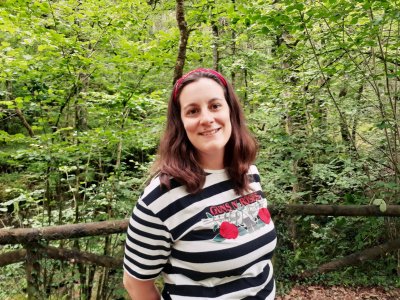- Home
- Maria Toyos Simón
Dr. Maria Toyos Simón |
|
Group: |
|
|
Phone: |
|
|
Email: |
|
|
Room: |
GEO, 2180 |

About me
I am a geologist interested in climate variability at different timescales, paleoceanography, and biogeochemistry. Currently, I am a Postdoc in the Cluster of Excellence ›The Ocean Floor – Earth’s Uncharted Interface‹, and part of the AG Paleoceanography working group.
My Ph.D. project focused on reconstructing fluctuations in the intensity of the Antarctic Circumpolar Current flow and past productivity changes in the subantarctic SE Pacific over the past ca.1.3 Myr. Currently, I combine measurements of constant flux proxies (such as excess thorium-230) and grain size analysis to evaluate the influence of current dynamics on sediment redistribution and its effect on proxy record interpretations and, ultimately, develop an approach to calculate mass accumulation rates back in time considering syndepositional redistribution. To do so, I am using sediments from the deep ocean floor.
I am passionate about communicating science to the general public; as a result, I am a co-founder and board member of the science for the public Association Villaviciosa Conciencia, where I serve in multiple science communication and outreach tasks. I am committed to developing my career in marine sciences by carrying out innovative research and constantly collaborating with colleagues from my institution and other internationally recognized centers for marine research. I also aspire to contribute with my knowledge to improve our understanding of the processes that can help us tackle the climate crisis.
Current research project
A novel approach to estimate long-term mass accumulation rates corrected for syndepositional redistribution in marine sediments
My general research agenda as a postdoctoral fellow is to investigate how the stratigraphy-based derived mass accumulation rates (which do not distinguish between vertical and lateral fluxes from syndepositional redistribution) and the resulting paleoceanographic interpretations are affected by the lateral redistribution of sediments in areas of high bottom current dynamics. In particular, the general objective of this project is to develop an approach that allows us to calculate accurately and easily those mass accumulation rates in strategic regions of the Earth affected by strong bottom current dynamics (i.e., northern and western Atlantic, Southern Ocean…) on timescales beyond the interval of applicability of the constant flux proxy 230Th. To do so, I examine the relationship between the Th-derived focusing factors, which indicate lateral redistribution of sediments, and the sortable silt, as a proxy for past bottom current strength fluctuations. I am basing this project on the study of sediment cores from the deep ocean, as they currently are the most important and reliable sources of information about the long-term record of particle deposition on the seafloor.


